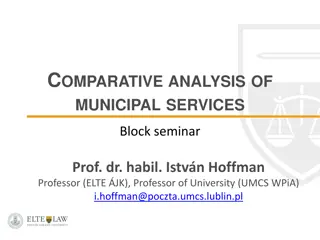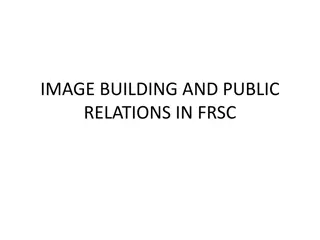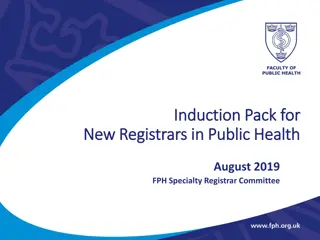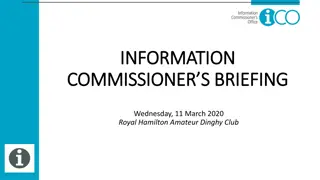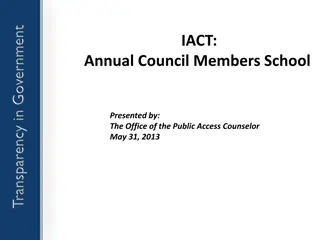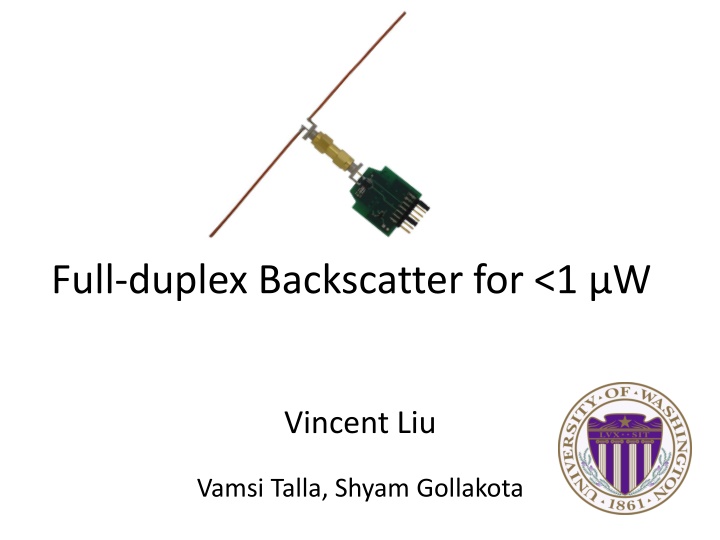
Innovative Full-Duplex Backscatter Technology for Efficient Wireless Communication
Explore the cutting-edge full-duplex backscatter technology enabling efficient wireless communication with reduced energy consumption and enhanced network performance. Learn how instant feedback and collision detection mechanisms revolutionize the way battery-free devices operate.
Download Presentation

Please find below an Image/Link to download the presentation.
The content on the website is provided AS IS for your information and personal use only. It may not be sold, licensed, or shared on other websites without obtaining consent from the author. If you encounter any issues during the download, it is possible that the publisher has removed the file from their server.
You are allowed to download the files provided on this website for personal or commercial use, subject to the condition that they are used lawfully. All files are the property of their respective owners.
The content on the website is provided AS IS for your information and personal use only. It may not be sold, licensed, or shared on other websites without obtaining consent from the author.
E N D
Presentation Transcript
Full-duplex Backscatter for <1 W Vincent Liu Vamsi Talla, Shyam Gollakota
Why Is This Hard? Existing solutions require O(1W) 1,000,000x too much!
Full-duplex Backscatter First full-duplex design for battery-free devices Same frequency, single antenna
Full-duplex Backscatter RF source Data (1 kbps) Feedback (100 bps) Alice Bob Brings self-interference down to the noise floor using < .75 uW
Why Do We Care? Energy Is The Bottleneck! Threshold to transmit a packet Capacitor Charge Recovery from collisions and errors takes a long time Time Capacitor charging is exponential in time
Why Do We Care? Energy Is The Bottleneck! Full-duplex can help fix this problem Instantaneous feedback enables a better network Collision detection (100x recharge time reduction) Error correction (10x overhead reduction for every packet)
How do we get full-duplex on battery-free devices? How do we use instantaneous feedback to design a power-efficient network stack?
How do we get full-duplex on battery-free devices? How do we use instantaneous feedback to design a power-efficient network stack?
Backscatter Overview RF Source Alice absorbs: Existing signal Alice reflects: Existing signal & Reflection TV Tower (RF source) Bob Alice Ambient Backscatter Additional Multipath Signal at Bob TV (Legacy receiver) Bob (Receiver) Alice (Sender) Time
Challenge: Bobs Reflections Lose Information RF Source Alice absorbs: Existing signal Alice reflects: Existing signal & Reflection TV Tower (RF source) Bob Alice Ambient Backscatter Additional Multipath Bob absorbs Bob reflects Signal at Bob TV (Legacy receiver) Bob (Receiver) Alice (Sender) Time
Solution: Change Phase Instead Bob sends 0 : Existing signal & shift (RF source) RF Source TV Tower Bob sends 1 : Existing signal & - shift Bob Alice Bob can decode Alice s signal Alice can decode Bob s signal Ambient Backscatter Additional Multipath Bob absorbs Bob reflects Signal at Bob TV (Legacy receiver) Bob (Receiver) Alice (Sender) Time
Practically, phase modulation is imperfect Residual interference
Solution: Leverage Difference in Rates to Eliminate Residual Interference Data (1 kbps) Feedback (100 bps) Alice Bob Remove interference with high-pass filter Remove interference with low-pass filter Can be done with cheap, passive circuits at NO additional power
Is Our Cancellation Effective? 10 -10 -30 Noise floor Magnitude (dB) -50 Original -70 With phase modulation Total cancellation -90 -110 -130 -150 0 200 400 Frequency (Hz) 600 800 1000 Reduces self-interference to noise floor
How do we get full-duplex on battery-free devices? How do we use instantaneous feedback to design a power-efficient network stack?
Challenge: Energy Is the Bottleneck Recovery from collisions/errors takes a long time We use Full-duplex Backscatter to achieve instantaneous feedback
Protocol: Acknowledge Data at a Bit Level 40 bits Forward data channel 1 2 3 4 5 Feedback channel 1 2 3 4 5 4 bits Time 1. Split packet into 40-bit chunks 2. Receiver returns a checksum of each chunk 3. Sender verifies checksum
Does Full-duplex Help With Collisions? Detect collisions and stop transmissions 1000 Full-duplex Backscatter Conventional 100 Recharge Time (ms) 10 1 0.1 0.01 -6 -4 -2 0 2 4 100x improvement in recharge time Input Power (dBm) 64-byte packet size
Does Full-duplex Help With Error Correction? Recover from errors by retransmitting only the failed bits 10000 Full-duplex Backscatter Conventional 1000 Average Overhead (%) 100 10 1 0.1 0 0.001 >90% decrease in overhead 64-byte packet size 0.002 0.003 0.004 0.005 Bit Error Rate
Conclusion We show The first full-duplex design for battery-free devices A power-efficient network stack that has significant gains across the board Re-design networking primitives with power as a first-class citizen MIMO (SIGCOMM 14), coding (SIGCOMM 14), UWB (?), TCP/IP (?),






